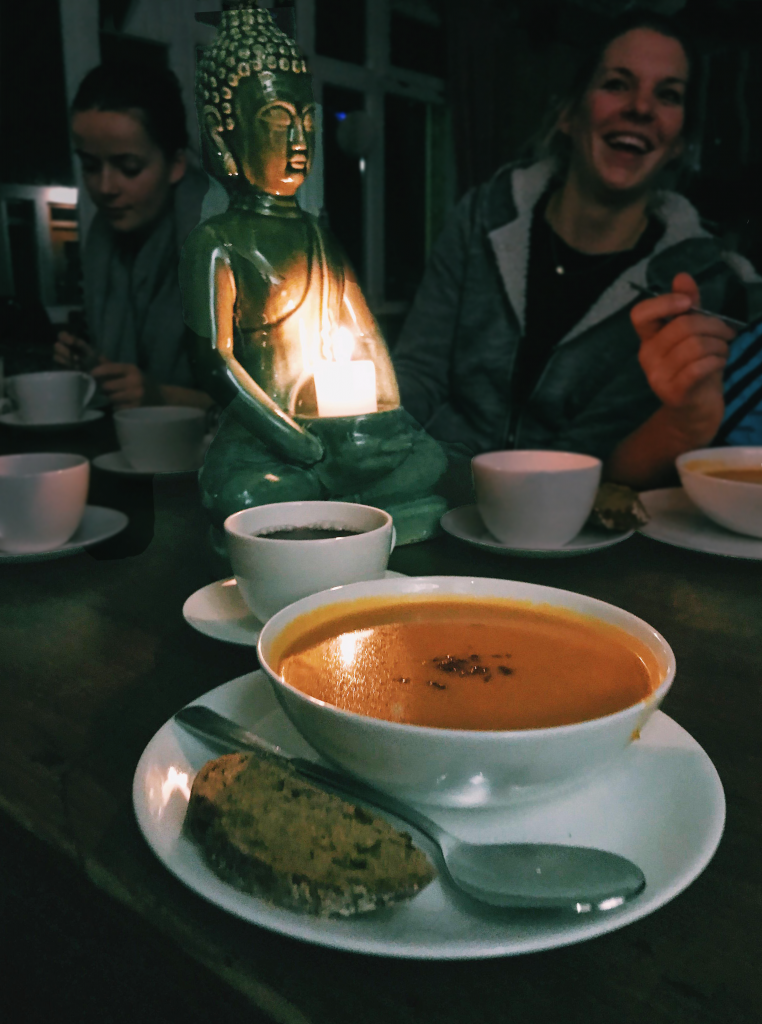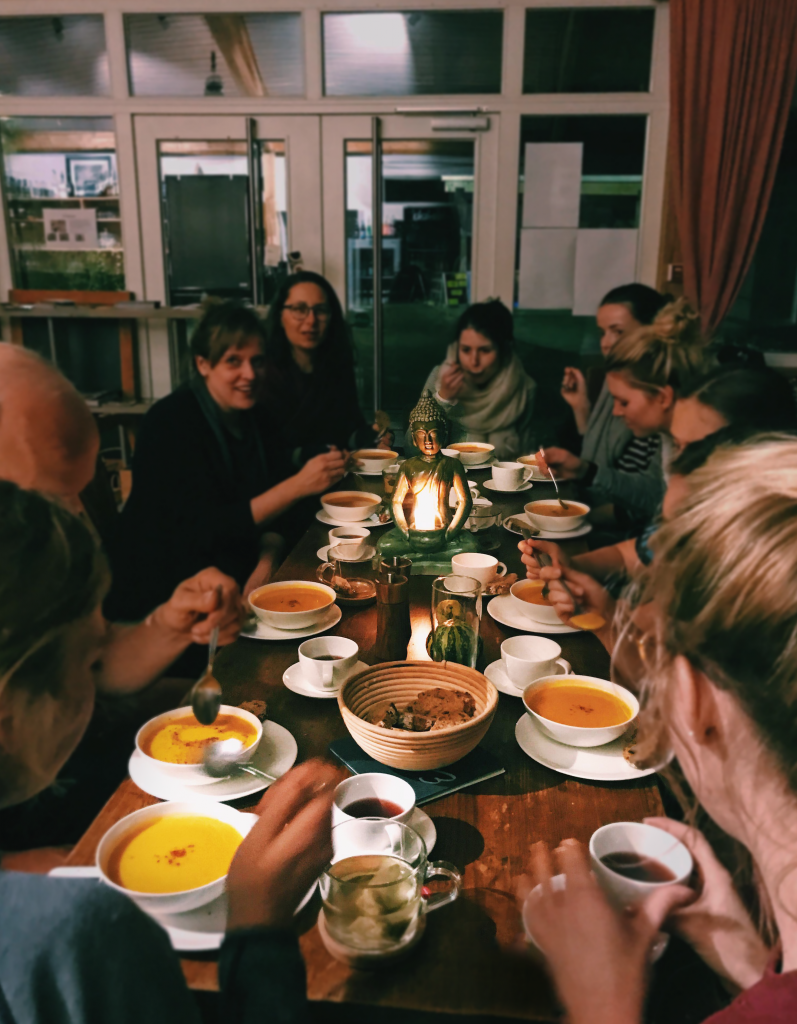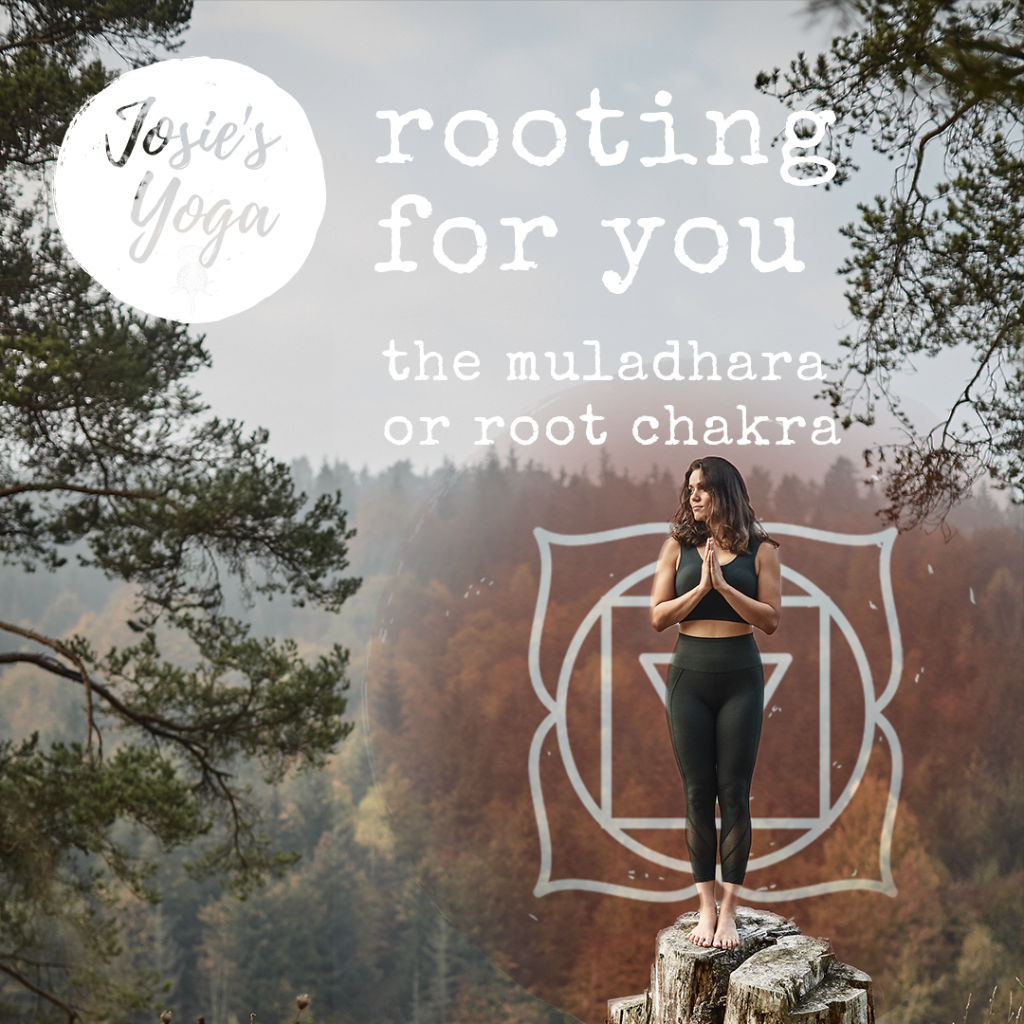7 facts to know about our root chakra to understand ourselves better
1
when your root chakra is in balance you you can experience life without fear. this allows to develop deep connections to your sourroundings, to the people who share your life with you and ultimately to yourself. notions connected to an in-balance muladhara are: security, stability, confidence, ease and not least basic trust.
2
when the muladhara is out of balance our primal instincts take over, provoking a (even physical) fight or flight response. this leaves you feeling: anxious, in existential angst; you might feel alone in this world – not connected to friends and family. at the same time, you are scared of the unfamiliar, and fear changes.
3
the root chakra’s energy flows along the bottom three vertebrae of your spine – from the tailbone, to the sacrum up to the L5 vertebrae. it is highly interconnected with the locomotor system of your legs. if your vertebrae and thus your chakra is physically blocked, there are a wide aray of leg injuries & hip issues that can ensue. also affected are your sexual organs and sex drive.
4
the nerves surrounding your root chakra connect to the kidneys and the plexus sacralis.
5
the colour of the root chakra is red, it’s assigned element is earth. fittingly, it is said that if you consume root vegetables – especially red ones – they will help you get your root chakra energy flowing. here are some examples: beetroots, radishes, carrots, potatos, parsnips.
6
the root chakra is said to be closely connected to the relationship we have with our mother, as she is the first person we connect with in this world. she instills in us the sense of comfort and steadiness which we carry forth within our root chakra.
7
interestingly, the root chakra is connected to the sense of smell. this also derives from it’s dependency on our early childhood, as the sense of smell is the first sense we use to navigate in this world; as babies for example we feel safe when we smell our mother.
root activating yoga flow in 3 phases
to activate the root chakra we stay with the element earth – meaning that I chose more static poses that are held from 3 to 5 breaths after settling in. this allows for you to really sense into the root chakra area and activate mulabhanda. here are some ideas on how to bring your base into balance though yoga.
1 | grow roots into the ground
start in easy pose, send your attention to the root chakra, deepen your breath. find the root chakra pressure point on your forearm one finger width underneath your wrist.
lengthen your legs out into seated forward fold. make sure to hinge in the pelvis, not the lower back. find the pressure points on the inside and outside of your heel.
move through warming-up cat-cows, attention drawn to initiating movement from the root chakra.
make your way to mountain pose and rest. notice how you are rooting down through your feet. imagine growing roots deep into the earth. engage mulabhanda. stay for at least 5 breaths.
2 | rise from your roots and find strength
begin the active part of your practice with tree pose. make sure to raise your leg only after grounding down through the standing leg’s heel and engaging your core muscles.
flow through moon salutations, remaining in each of the poses for 3-5 breaths. remember, the root chakra is about steadiness, yet ease. support yourself with blocks and bolsters to be able to find this stillness and lightness in your poses. I chose moon salutations over sun salutations not only for them including poses which are great for root chakra activation (mountain pose, garland pose, triangle pose for example) but also because they connect with the female, the moon and thus reflect the root chakras intertwinedness with the relationship we have with our mother.
I chose eagle pose and standing splits with eagle arms as peak poses for this flow. the emphasis in both is grounding down firmly, thus enhancing the experience of connection to the earth, while developing wings and lifting off the ground- ok getting carried away with the metaphors here. but you get the idea.
from standing splits step back into high lunge, keeping the eagle arms until on your third exhale you disentagle, opening your arms to your side.
you can add a slow dancing warrior sequence. find steadiness especially in warrior 2, drawing your legs together, feeling fierce and strong. move into triangle pose, then lift off into half-moon as your second peak pose. I love ardha chandrasana as an example of how activating mulabhanda, connecting to your foundation and engaging your core are game changers when it comes to balancing. additionally, this pose again offers steadiness and the sensation of weightlessness at the ame time.
3 | feel safe and light
in your ensuing cool-down, make sure to rest in child’s pose for extra feeling of safety, of being at home in yourself. counter the forward bending with a relaxing bridge pose, releasing tension from the root chakra while firmly rooting down through your feet.
do not forget to savasana thorougly.
playlist
themes:
groundedness, ease, steadiness, serenity
my personal favorites:
Roots – Billie Marten | steady – fujitsu | easy – ella mai
this playlist covers 90min of vinyasa yoga + 10-15min of mediation
(including time to shuffle around after getting back into a seated position after long sweet savasana).
meditation mantra
“I am strong, stable and at peace.”
recipes
found on yogajournal.com

Thai Red Curry Coconut Squash Soup
Ingredients
2 table spoons coconut oil
1 medium yellow onion, chopped
4 garlic cloves, minced
2–3 table spoons vegan Thai red curry paste
2 tea spoons ground coriander
1 tea spoons ground cumin
¼ tea spoons sea salt
¼ tea spoons crushed red pepper flakes
1 kg butternut squash
1 liter vegetable broth
1 tbsp fresh lime juice
sprinkle with:
fresh cilantro
60g roasted coconut flakes
250ml cup coconut milk
Preparation
In a large pot, heat oil over medium heat. Add onion, garlic, curry paste, coriander, cumin, salt, and red pepper flakes. Stir & cook for 5 minutes. Add butternut squash, and cook for 1 minute. Add broth, and bring to a boil. Then reduce heat, and simmer until squash is soft, 15–20 minutes. Once squash is soft, blend or purée soup, then add lime juice. Serve drizzled with coconut milk and sprinkled with toasted coconut flakes and fresh cilantro.
Mulled Black Pepper-Hibiscus Wine
1 cup red wine
1 ½ cup water
1 hibiscus tea bag
1 tablespoon honey (optional)
3 green cardamom pods
8 black peppercorns, cracked
Place the red wine, water, tea bag, honey, cardamom pods, and peppercorns in a small saucepan over high heat. Cook 3 to 4 minutes until the mixture comes to a roiling boil. Reduce the heat to medium and simmer 2 to 3 minutes more to allow some of the alcohol to burn off.

sources & further reading:
Patricia Mercier: „the little book of chakras“
a cute little compilation of what there is to know about the chakras and how to align them. this book includes helpful excersises that won’t take a lot of time out of your day but teaches you mindfulness when it comes to sensing into your energetic body.
ISBN: 1856753700 – english / german
David Rotter: „Wurzelchakra“ – chakra.net
i especially loved the (tabular) overview Rotter gives over the implications and connections of the root chakra to our physical body as well as its mental influences. you will find a list of foods, aromas, scents and christals in his detailed list to help align your chakra. however, his examination has a stronger tendency to what could be called „esothericism“.






